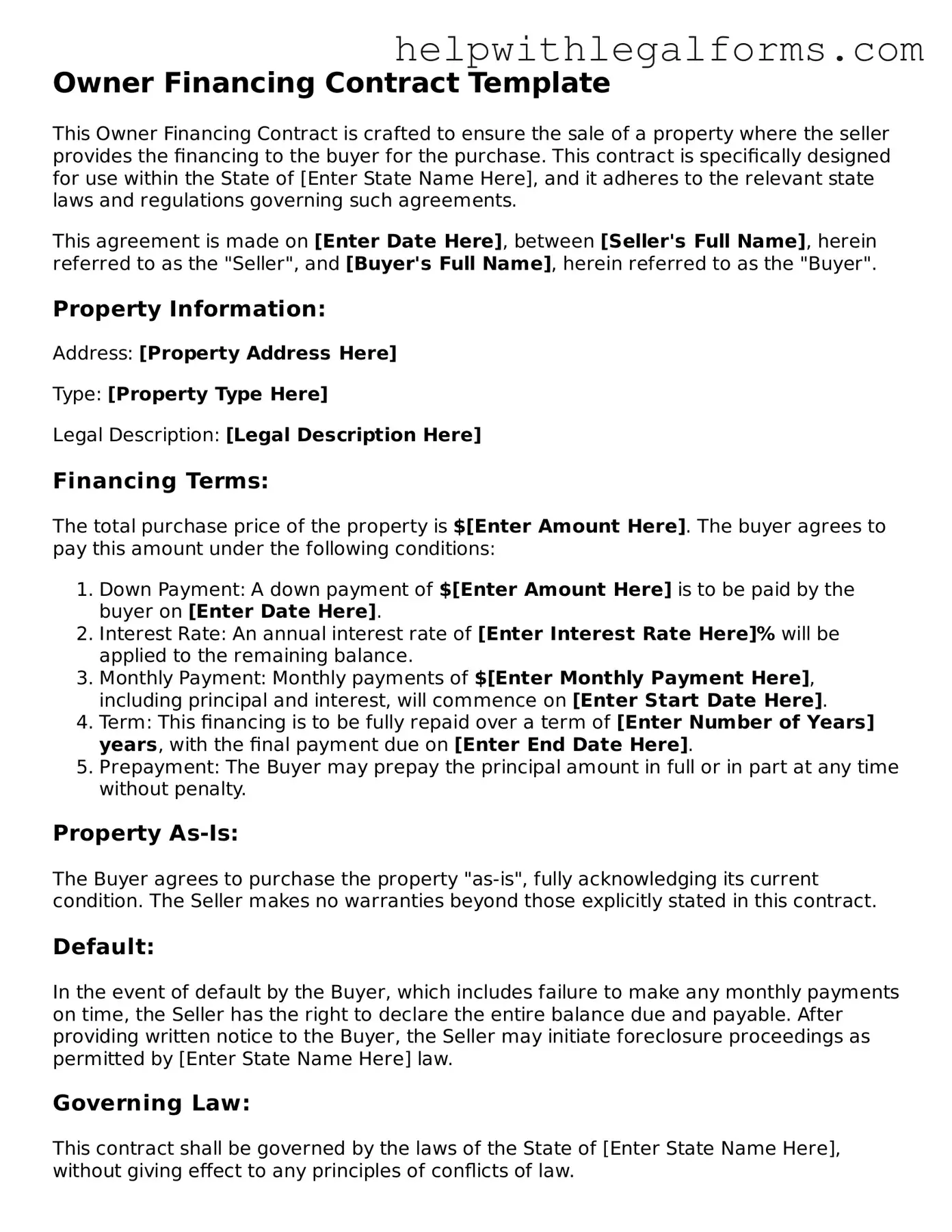Owner Financing Contract Template
This Owner Financing Contract is crafted to ensure the sale of a property where the seller provides the financing to the buyer for the purchase. This contract is specifically designed for use within the State of [Enter State Name Here], and it adheres to the relevant state laws and regulations governing such agreements.
This agreement is made on [Enter Date Here], between [Seller's Full Name], herein referred to as the "Seller", and [Buyer's Full Name], herein referred to as the "Buyer".
Property Information:
Address: [Property Address Here]
Type: [Property Type Here]
Legal Description: [Legal Description Here]
Financing Terms:
The total purchase price of the property is $[Enter Amount Here]. The buyer agrees to pay this amount under the following conditions:
- Down Payment: A down payment of $[Enter Amount Here] is to be paid by the buyer on [Enter Date Here].
- Interest Rate: An annual interest rate of [Enter Interest Rate Here]% will be applied to the remaining balance.
- Monthly Payment: Monthly payments of $[Enter Monthly Payment Here], including principal and interest, will commence on [Enter Start Date Here].
- Term: This financing is to be fully repaid over a term of [Enter Number of Years] years, with the final payment due on [Enter End Date Here].
- Prepayment: The Buyer may prepay the principal amount in full or in part at any time without penalty.
Property As-Is:
The Buyer agrees to purchase the property "as-is", fully acknowledging its current condition. The Seller makes no warranties beyond those explicitly stated in this contract.
Default:
In the event of default by the Buyer, which includes failure to make any monthly payments on time, the Seller has the right to declare the entire balance due and payable. After providing written notice to the Buyer, the Seller may initiate foreclosure proceedings as permitted by [Enter State Name Here] law.
Governing Law:
This contract shall be governed by the laws of the State of [Enter State Name Here], without giving effect to any principles of conflicts of law.
Signatures:
This agreement is entered into willingly by both parties on the date first written above, with full acknowledgment and consent of all terms herein.
Seller's Signature: ___________________________ Date: [Enter Date Here]
Buyer's Signature: ___________________________ Date: [Enter Date Here]
Witness (if applicable):
Witness's Signature: ___________________________ Date: [Enter Date Here]
